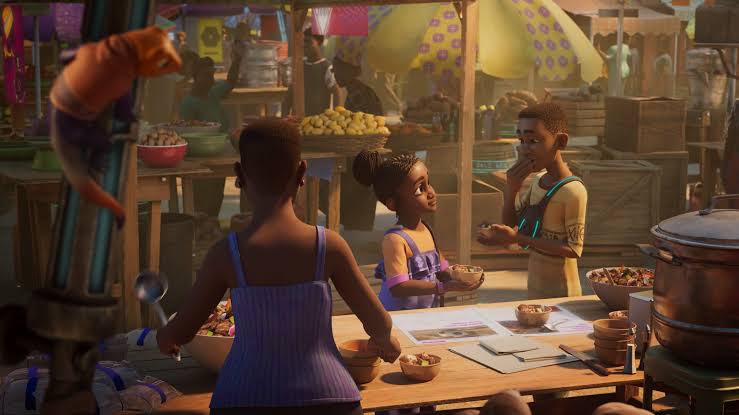In an unprecedented move that marries the rich cultural tapestry of Nigeria with the imaginative possibilities of science fiction, Disney+ has introduced “Iwaju”, a series set in a futuristic version of Lagos. This animated saga has already begun to captivate audiences with its innovative portrayal of the city’s everyday life, now amplified through the lens of high-tech wonders.

“Iwaju”, which translates to ‘future’ in Yoruba, is not just a title but a vision of what Lagos could become. The series, a collaboration between Disney and the pan-African entertainment company Kugali, infuses Lagosian slang, lagoon markets, and the notorious traffic jams with a new vibrancy, projecting them into a future where the city’s current challenges persist amidst a backdrop of advanced technology. Disney+’s “Iwaju” is a bold reimagining of Lagos, offering a glimpse into a future where the city’s spirit and challenges are amplified through the exciting possibilities of science fiction. It’s a series that promises to entertain, provoke thought, and, most importantly, celebrate the essence of Lagos and its people.

At the core of “Iwaju” is the tale of two children from contrasting walks of life: Tola, a 10-year-old from a wealthy family, and Kole, a 13-year-old tech prodigy living in the city’s poorest area. Their friendship is tested by the machinations of Bode, a tech-savvy villain who heads a criminal kidnapping ring—a poignant nod to a pressing issue in contemporary Nigeria.

The creative force behind “Iwaju” includes Nigerians Olufikayo ‘Ziki’ Adeola, Tolu Olowofoyeku, and Ugandan Hamid Ibrahim, founders of Kugali. Their vision was to create a series that not only resonates with Lagosians through its authentic representation of the city but also introduces its unique character to a global audience. “Iwaju” is more than entertainment; it’s a groundbreaking venture for African storytelling in the realm of animation. It represents Disney’s first partnership with an external studio to feature African narratives, a significant step towards diversifying the stories told within the mainstream media landscape





